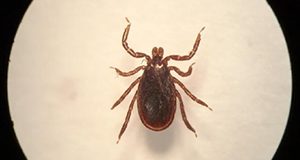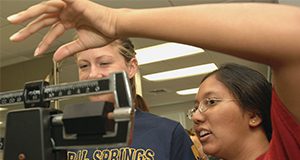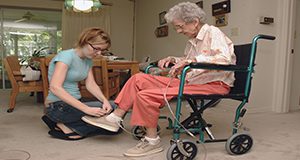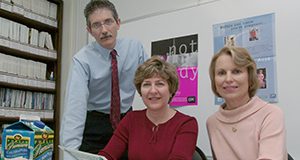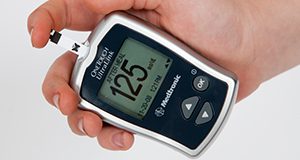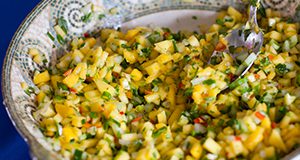Southern tick-associated rash illness (STARI) is a human tick-borne disease that occurs following the bite of Amblyomma americanum, the lone star tick, which is the most common and aggressive human-biting tick in the South, accounting for over 90% of human tick bites in the region. STARI is often described as a “Lyme-like illness” because it causes a rash like the “bulls eye” rash associated with Lyme. Other symptoms of STARI that are similar to symptoms of Lyme disease include headache, fatigue, and muscle and joint pain. Scientists know the tick vector and that some wildlife species play a role in maintaining the disease in nature, but very little else is understood about this mysterious illness. This 4-page fact sheet written by Katherine Sayler, Carisa Boyce, and Samantha Wisely and published by the Department of Wildlife Ecology and Conservation provides the basic facts we do know, the differences between STARI and Lyme disease, plus advice for tick-bite sufferers and strategies to avoid tick bites.
http://edis.ifas.ufl.edu/uw421
Category: Families & Consumers
Guidelines for Operation and Usage of County Kitchens in the State of Florida
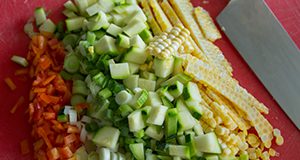 In recent years, many people have become interested in developing small food businesses. Using county kitchens to make food products for sale may seem very attractive. However, because of different local, state, and federal regulation requirements, there may be some confusion and unresolved conflicts among different parties as to the legalities and practicalities involved. This 3-page fact sheet provides guidelines and advice for Florida Extension personnel to use when determining the appropriate usage for their kitchen facilities, based on a situation in one Florida county. The publication covers utilization, roles and responsibilities, and potential liability issues relevant to the use of county kitchens, providing some potential solutions to conflicts for all parties. Written by Amarat Simonne, Tim Wilson, Geralyn Sachs, Joanne Cooper, Brenda Morris, Steven von Bodungen, and Liz Felter, and published by the UF Department of Family, Youth and Community Sciences, August 2016.
In recent years, many people have become interested in developing small food businesses. Using county kitchens to make food products for sale may seem very attractive. However, because of different local, state, and federal regulation requirements, there may be some confusion and unresolved conflicts among different parties as to the legalities and practicalities involved. This 3-page fact sheet provides guidelines and advice for Florida Extension personnel to use when determining the appropriate usage for their kitchen facilities, based on a situation in one Florida county. The publication covers utilization, roles and responsibilities, and potential liability issues relevant to the use of county kitchens, providing some potential solutions to conflicts for all parties. Written by Amarat Simonne, Tim Wilson, Geralyn Sachs, Joanne Cooper, Brenda Morris, Steven von Bodungen, and Liz Felter, and published by the UF Department of Family, Youth and Community Sciences, August 2016.
http://edis.ifas.ufl.edu/fy1469
University Zika Preparedness (UF website)
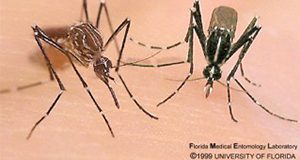
The University of Florida continues to monitor the spread of the Zika virus, working closely with local and state Department of Health officials. This UF website provides a centralized resource for current University of Florida information, including communications, prevention tips, resources, and research.
http://zika.ufl.edu
The Art of Goodbye: Planning Final Arrangements
The consumer is faced with complex personal decisions while making final arrangements. Final arrangements might include a religious ritual, service, tribute, funeral, and/or burial. This 7-page fact sheet, part of a new series entitled The Art of Goodbye series, is designed to help in the development of a final arrangements plan using a coordinated approach. This document discusses the Funeral Rule, determinants, funeral providers, types of final arrangements, tissue or organ donation, body donation, preplanning, and prepaying. Written by Lynda Spence, and published by the UF Department of Family, Youth and Community Sciences, July 2016.
http://edis.ifas.ufl.edu/fy1466
A Guide to Tracking Physical Activity
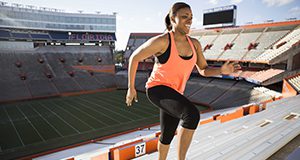
Being physically active is fun, has many physical and mental health benefits, and can help maintain a healthy weight. The Physical Activity Guidelines for Americans recommend that adults be purposefully active for at least 150 minutes per week for overall health and wellness. One proven strategy to make sure you reach your activity goal is to track your energy expenditure. This three-page fact sheet explains the different free and low cost cell phone apps, websites, and portable devices available for tracking physical activity. Written by Madison K. Keesling and Anne E. Mathews and published by the Food Science and Human Nutrition Department.
http://edis.ifas.ufl.edu/fs283
Body Fat and Health: How Can I Tell if I am at Risk for Health Problems?
Obesity is called an epidemic because there is a high rate of obesity in the United States. In fact, over 30% of all US adults were obese as of 2012, and more than two-thirds are either overweight or obese. This is concerning because excess body fat is linked to poor health and chronic diseases, such as diabetes and heart disease. The amount of excess body fat a person has is commonly sorted into weight status categories using Body Mass Index. This three-page fact sheet describes the body mass index and how to calculate it. Written by Kohrine A. Counts and Anne E. Mathews and published by the Food Science and Human Nutrition Department.
http://edis.ifas.ufl.edu/fs284
Prevencion de Caidas: Estilos de vida y riesgo de caidas
Hay muchos factores que pueden contribuir a las razones por las que usted se cae, pero algunos de éstos, los puede cambiar. A continuación le ofrecemos algunos cambios sencillos que puede hacer para reducir el riesgo de caerse.
This 2-page fact sheet is a major revision of the Spanish version of FCS2230/FY736:Fall Prevention: Lifestyle Factors and Fall Risk. Written by Linda B. Bobroff, and published by the UF Department of Family, Youth and Community Sciences, revised April 2016.
http://edis.ifas.ufl.edu/fy860
Registration and Licensure of Nutrition Professionals in Florida
Consumers need to know who is qualified to practice nutrition or dietetics before seeking nutrition advice. This 3-page fact sheet is a major revision that provides information about dietetic registration and licensure. Written by Linda B. Bobroff, and published by the UF Department of Family, Youth and Community Sciences, revised June 2016.
http://edis.ifas.ufl.edu/fy690
Vida Saludable: Fuentes de informacion sobre la diabetes
Muchos recursos sobre la diabetes se encuentra en línea.
This 2-page fact sheet provides a list of resources with information on diabetes. Written by Linda B. Bobroff and Paulina Wittkowsky, and published by the UF Department of Family, Youth and Community Sciences, revised August 2015.
http://edis.ifas.ufl.edu/fy083
Shiga Toxin-Producing Escherichia coli: Detection, Differentiation, and Implications for Food Safety
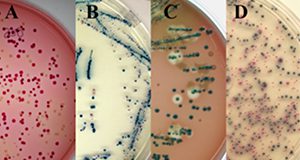
Shiga toxin is a protein found within the genome of a type of virus called a bacteriophage. These bacteriophages can integrate into the genomes of the bacterium E. Coli. Even though most E. coli are benign or even beneficial members of our gut microbial communities, strains carrying Shiga-toxin encoding genes are highly pathogenic in humans and other animals. This six-page fact sheet discusses the two types of Shiga toxins and the best approaches to identifying and determining which Shiga toxin is present. Written by William J. Zaragoza, Max Teplitski, and Clifton K. Fagerquist and published by the Department of Soil and Water Sciences.
http://edis.ifas.ufl.edu/ss654
Identifying the Attitudes and Preferences of Parents and Children for Seafood: Summary of Focus Group Results
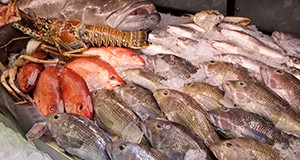
Seafood contains high-quality protein, vitamins, and minerals that have many health benefits, but the average family’s consumption of seafood in the United States remains below recommended levels. To begin to understand how to raise consumption levels, the study described in this three-page fact sheet focused on the influence parents’ seafood consumption habits may have on their children. Written by Anh Sam, Xiang Bi, and Lisa House and published by the Department of Food and Resource Economics.
http://edis.ifas.ufl.edu/fe992
Healthy Eating: Meals Without Cooking
This 2-page fact sheet is a major revision featuring a fun word search and a delicious recipe that requires no cooking. Written by Linda B. Bobroff, and published by the UF Department of Family, Youth and Community Sciences, revised July 2016.
http://edis.ifas.ufl.edu/fy1215
Fall Prevention: Home Safety Inventory
 Most falls occur in the home, so it is wise to take time to do a home safety inventory. This 2-page fact sheet is a major revision that can be used to identify problem areas in your home. Written by Linda B. Bobroff, and published by the UF Department of Family, Youth and Community Sciences, revised July 2016.
Most falls occur in the home, so it is wise to take time to do a home safety inventory. This 2-page fact sheet is a major revision that can be used to identify problem areas in your home. Written by Linda B. Bobroff, and published by the UF Department of Family, Youth and Community Sciences, revised July 2016.
http://edis.ifas.ufl.edu/fy735
Facts about Fats and Oils
Fats and oils are important for good health. Fats provide your body with energy while oils are needed in the diet in small amounts because they are a major source of Vitamin E, which has antioxidant properties. This four-page fact sheet describes the different types of fats and oils and tips for choosing the healthiest types.Written by Tiffany N. Stodtko and Wendy J. Dahl and published by the Food Science and Human Nutrition Department.
http://edis.ifas.ufl.edu/fs281
Health Benefits of Olive Oil and Olive Extracts

Olive oil is known for its health benefits. There are three common types of olive oil, namely virgin olive oil, refined olive oil, and olive pomace oil. Each has its unique processing method, flavor characteristics, composition, and food applications. This five-page fact sheet describes each of the types of olive oil and their pros and cons. Written by Wendy J. Dahl, Michael A. Tandlich, and Julie England and published by the Food Science and Human Nutrition Department.
http://edis.ifas.ufl.edu/fs282
Healthy Eating: Fluids
 More than one-half of an adult’s body weight is water. Water brings nutrients to the cells in our bodies and removes waste. Our bodies cannot function if they do not receive enough water. This 2-page fact sheet is a major revision that addresses the importance of water to physical functions, effects of dehydration, risk factors for dehydration in older adults, and fluid intake suggestions. Written by Linda B. Bobroff, and published by the UF Department of Family, Youth and Community Sciences, revised June 2016.
More than one-half of an adult’s body weight is water. Water brings nutrients to the cells in our bodies and removes waste. Our bodies cannot function if they do not receive enough water. This 2-page fact sheet is a major revision that addresses the importance of water to physical functions, effects of dehydration, risk factors for dehydration in older adults, and fluid intake suggestions. Written by Linda B. Bobroff, and published by the UF Department of Family, Youth and Community Sciences, revised June 2016.
http://edis.ifas.ufl.edu/fy070
Caregivers, Caseworkers, and Biological Parents: Risk Factors for Foster Teen Pregnancy and Ways You Can Make a Difference
Many teens exhibit risk-taking behavior. That said, the past experiences of foster care youth in particular make them likely to engage in activity that could cause teen pregnancy and sexually transmitted infections. This 9-page fact sheet is designed to provide kin and foster caregivers, caseworkers, and biological parents of children in foster care with information about the physical, emotional, and psychological concerns related to teen reproductive health in the foster care system. It also aims to help all involved identify the risk factors associated with foster teen pregnancy and explains legal rights regarding foster teen health. Written by Nora Del Giudice, Stephanie C. Toelle, David C. Diehl, and Jody S. Nicholson, and published by the UF Department of Family, Youth and Community Sciences, May 2016.
http://edis.ifas.ufl.edu/fy1464
De Compras para la Salud: Cereales de Desayuno
It is no secret that breakfast is an important meal. Eating breakfast provides you with physical and mental energy to start the day, along with vitamins and minerals. Cereal is a quick, versatile, and budget-friendly breakfast choice. The benefits of eating a healthy cereal include increased fiber intake and lower body weight. But navigating the cereal aisle at your local grocery store can be an overwhelming experience. This three-page fact sheet is the Spanish language version of Shopping for Health: Breakfast Cereals, http://edis.ifas.ufl.edu/fs274. Written by Jenna Seckar and Wendy J. Dahl and published by the Food Science and Human Nutrition Department.
http://edis.ifas.ufl.edu/fs280
De Compras para la Salud: Aperitivos
At first glance, you might think that snacking should be avoided because of the extra calories they can add to your diet. However, studies have shown there may be benefits when healthy snack choices are made. Read this article to learn about the benefits of healthy snacks and to learn healthy snack shopping tips. Includes recipes for homemade crispy kale chips and peanut butter and jelly yogurt. This four-page fact sheet is the Spanish langauge version of FS279 Shopping For Health: Snack Foods. Written by Carley Rusch and Wendy J. Dahl and published by the Food Science and Human Nutrition Department.
http://edis.ifas.ufl.edu/fs279
Diabetes-Related Websites
Managing diabetes requires learning about your disease, making positive lifestyle choices, and being a partner with your health care team. Finding and using current and reliable sources of health information on the Internet also helps you make choices that support your health while avoiding potentially harmful products and practices. This 1-page fact sheet is a major revision that provides links to government, educational, and recognized professional websites on diabetes. Written by Linda B. Bobroff and Nancy J. Gal, and published by the UF Department of Family, Youth and Community Sciences. Revised May 2016.
http://edis.ifas.ufl.edu/fy1103
